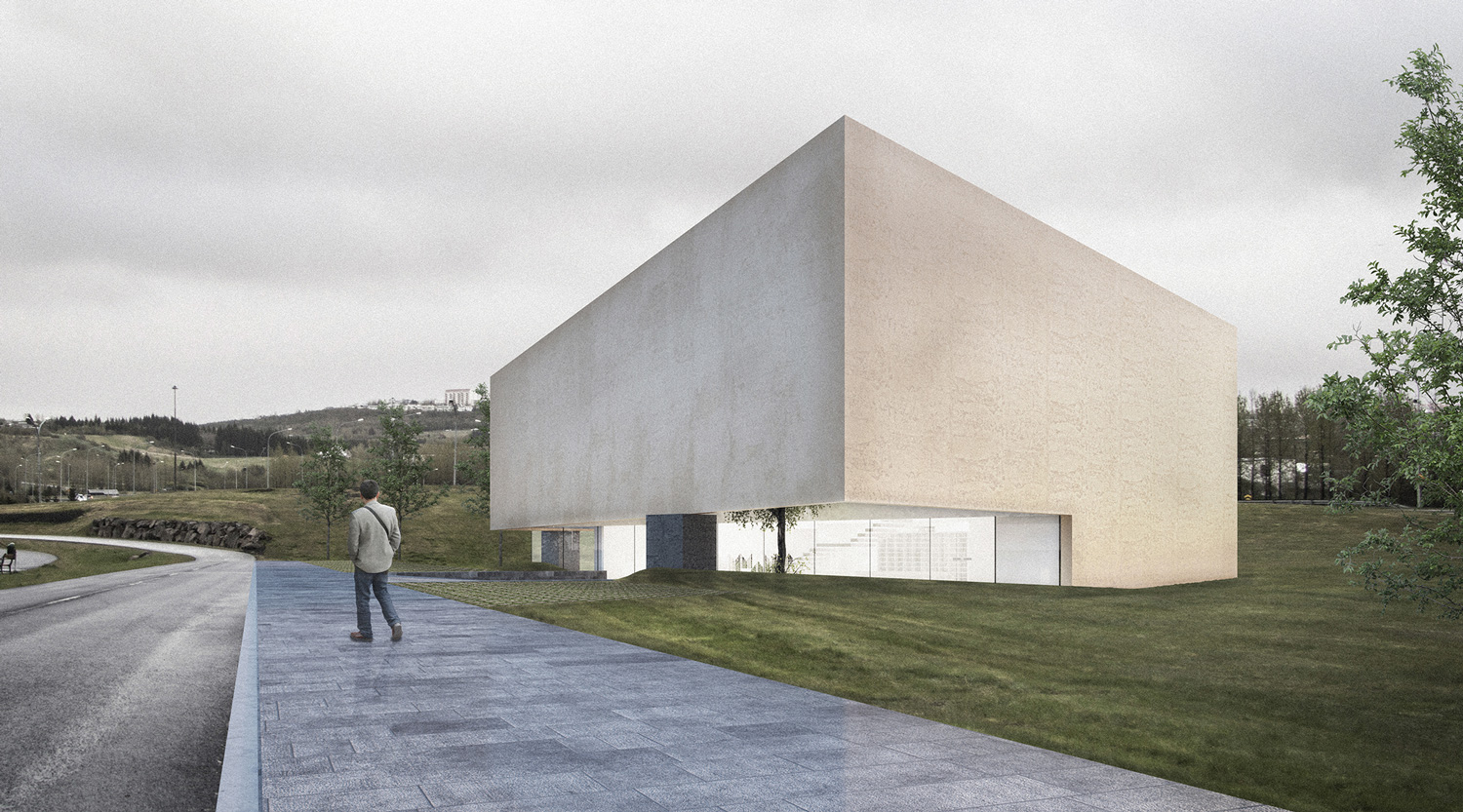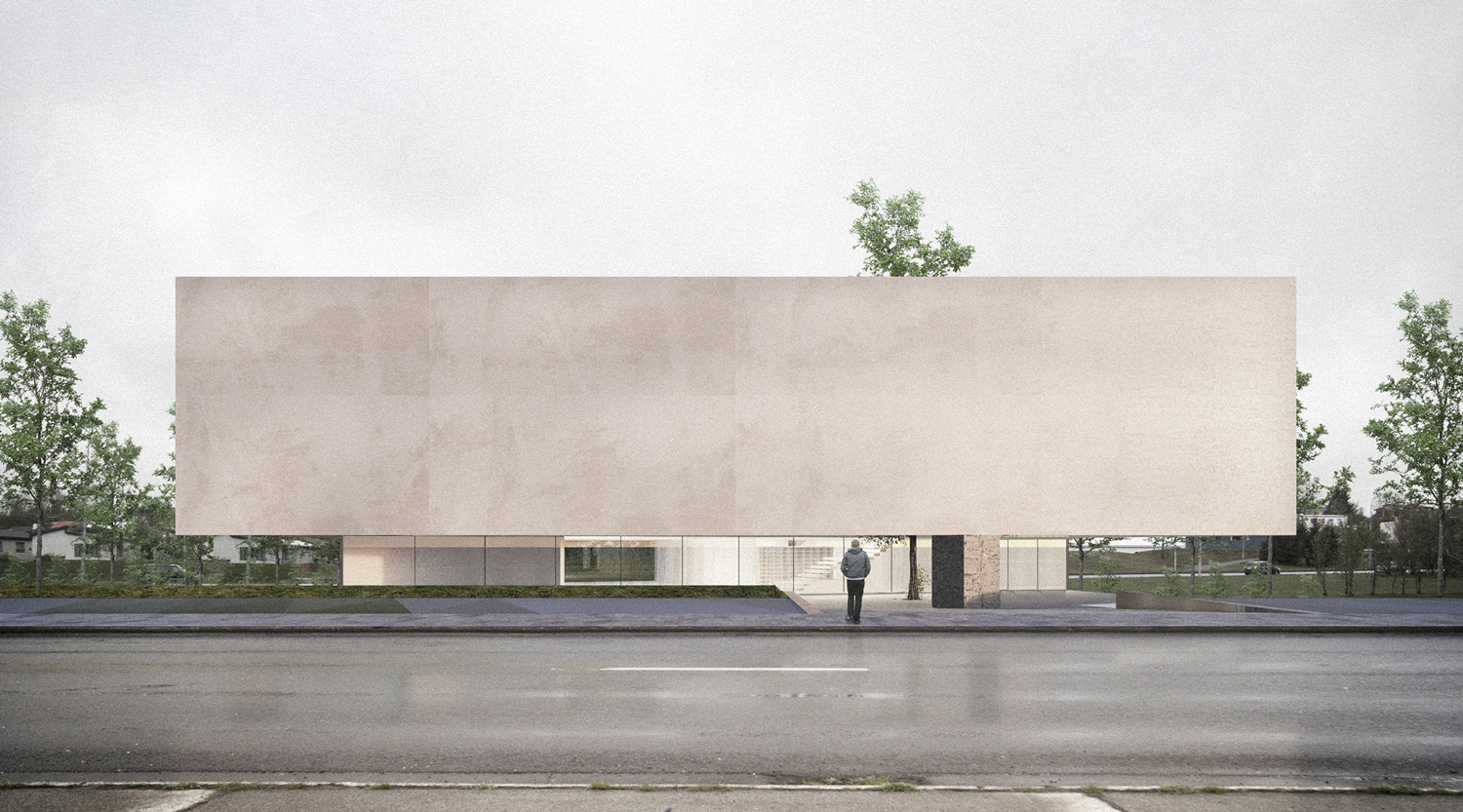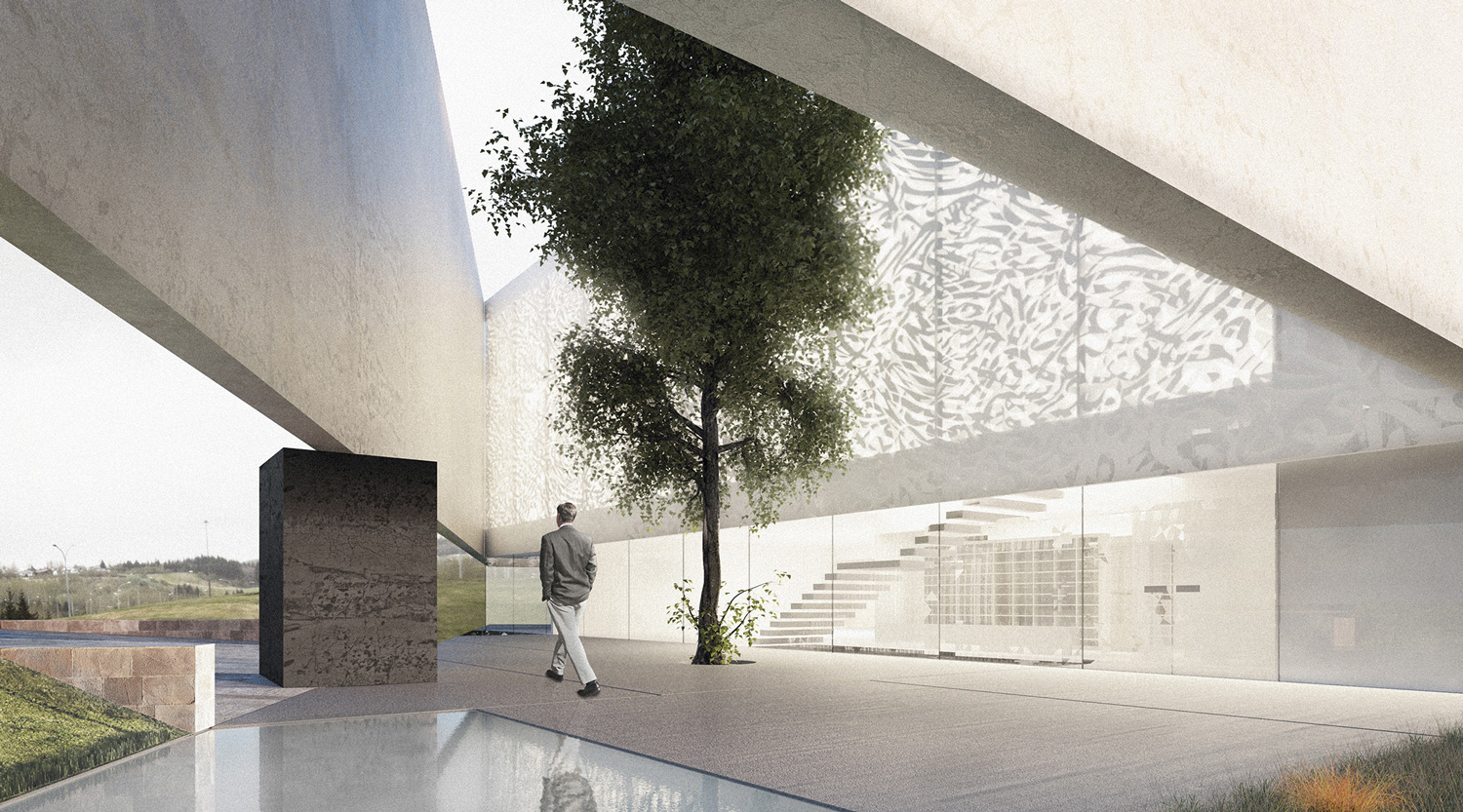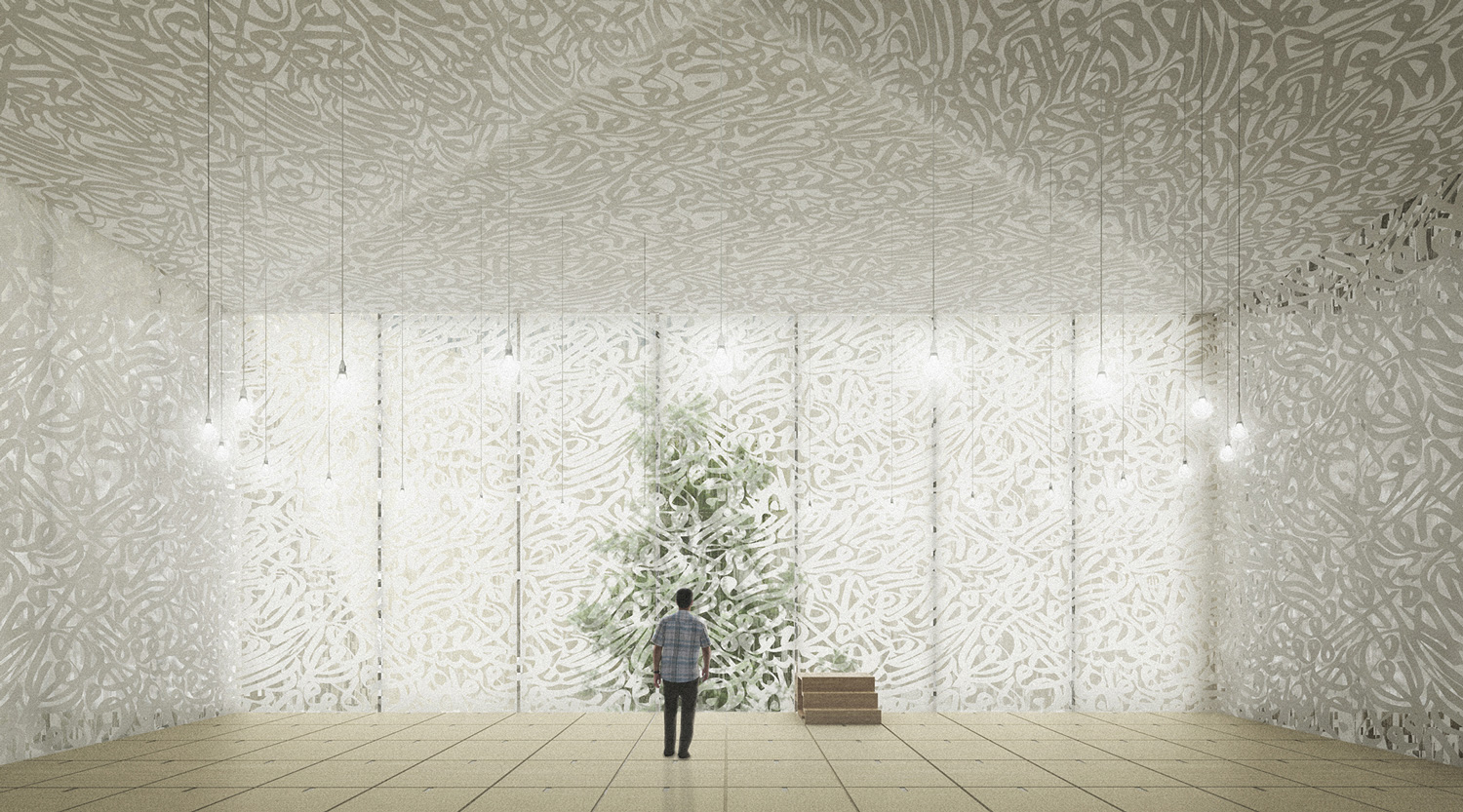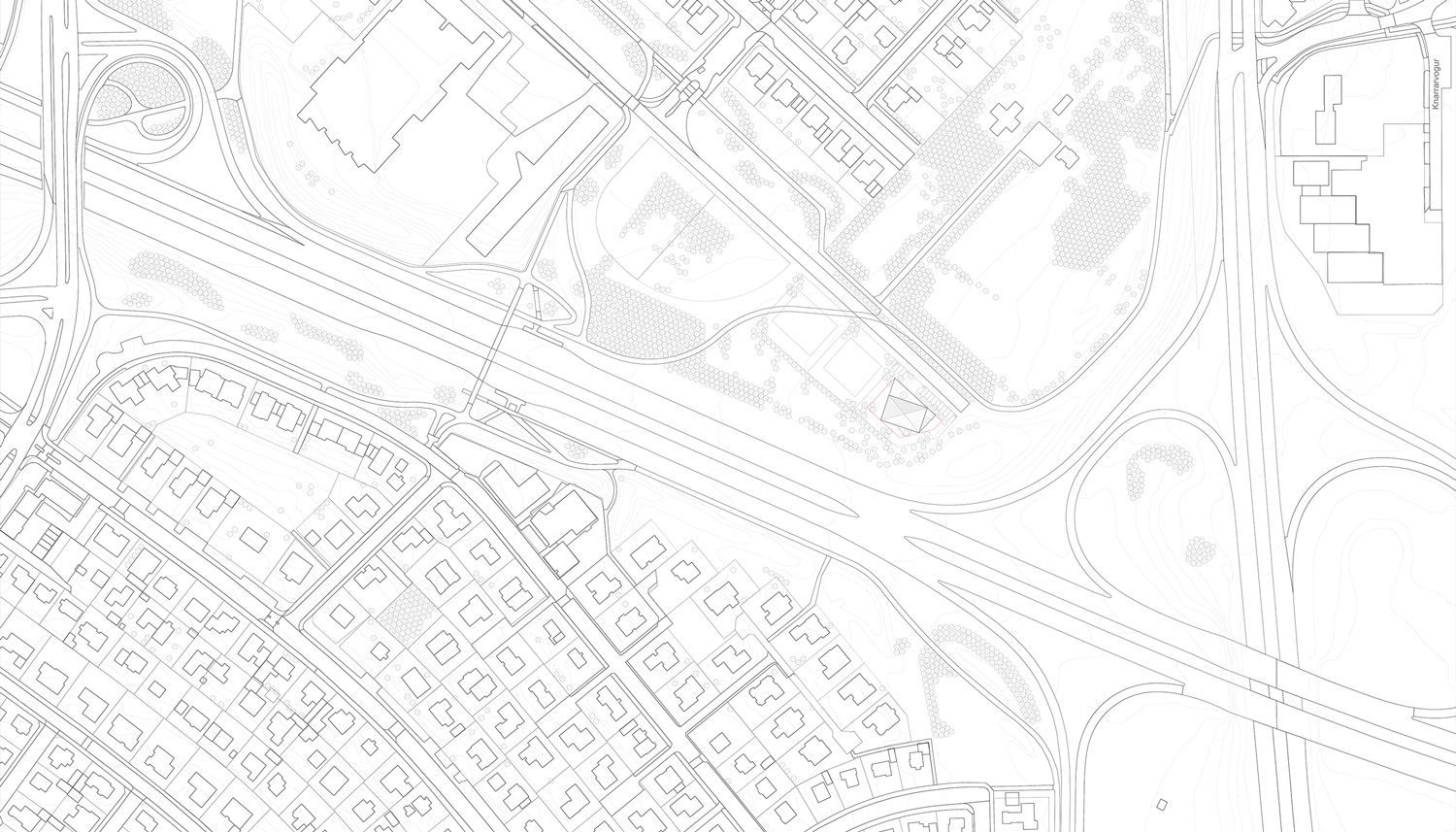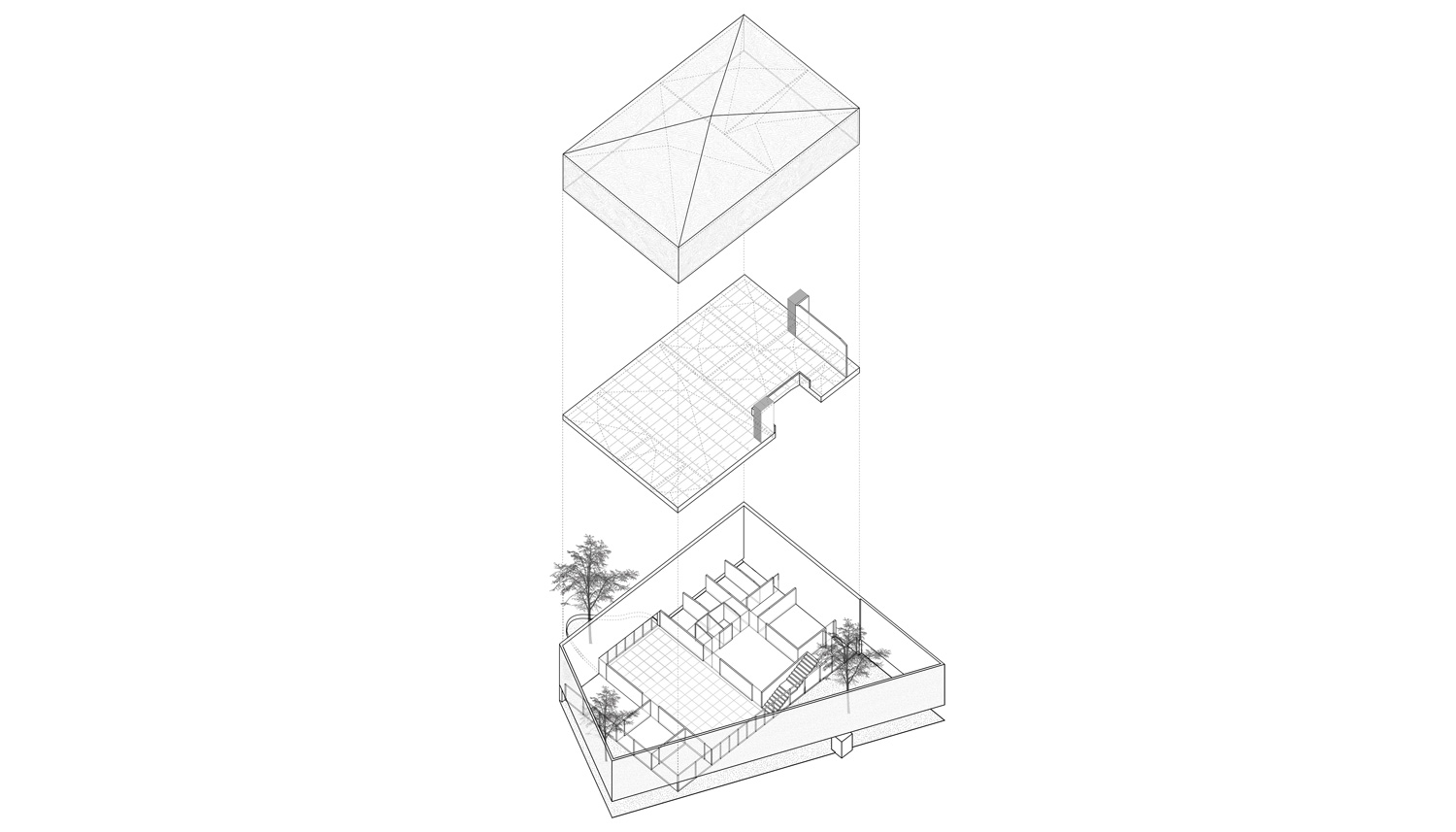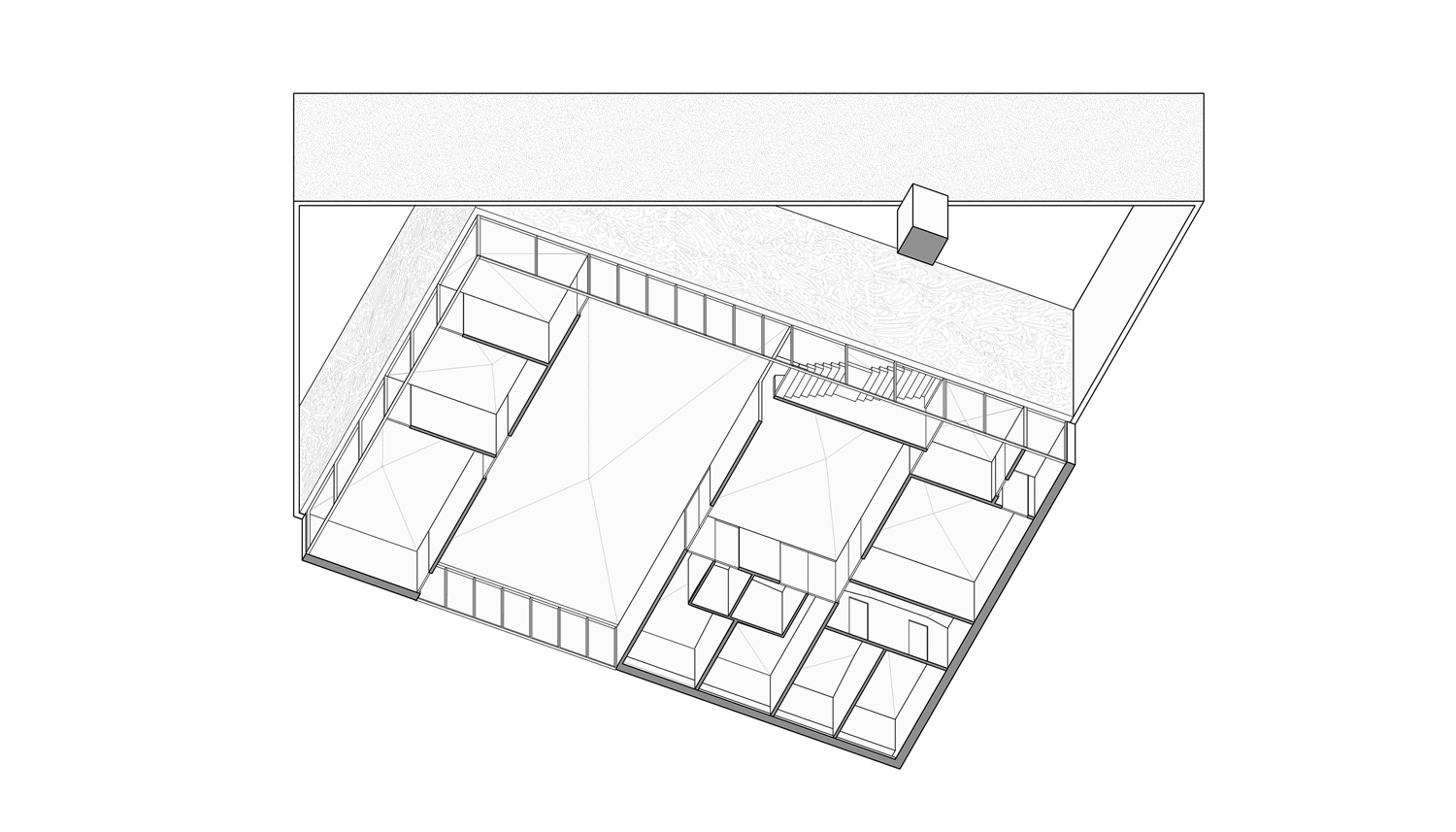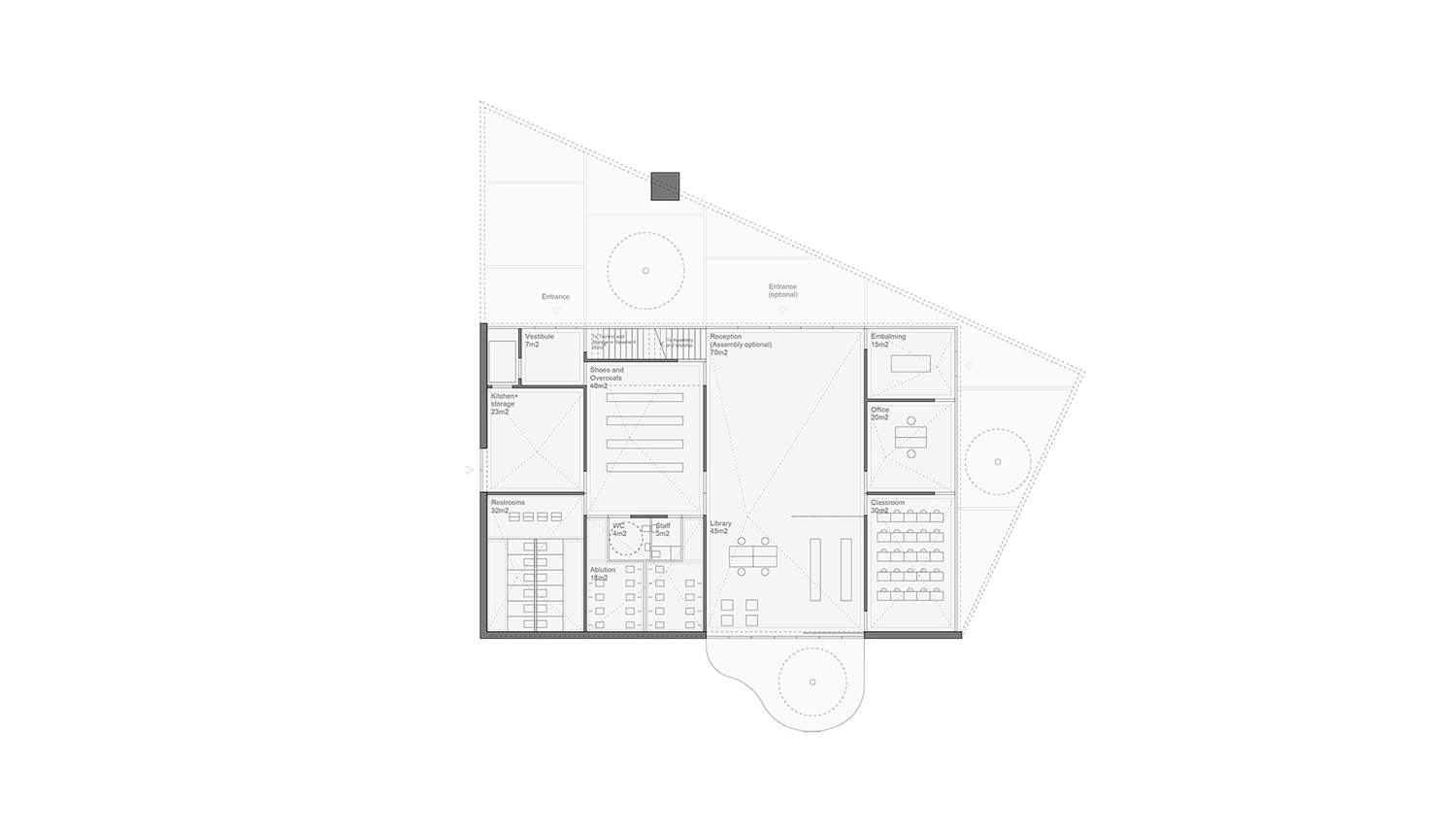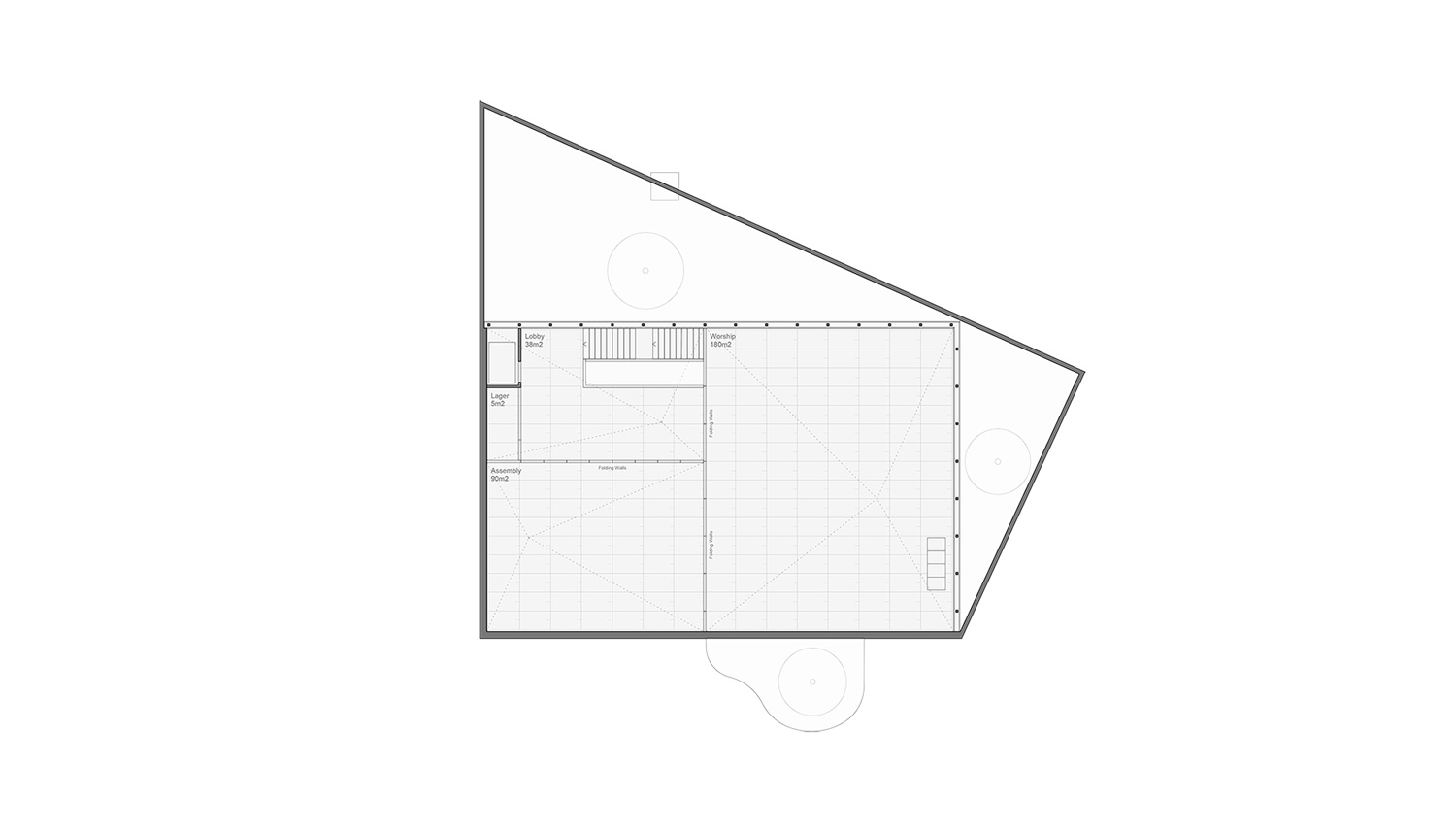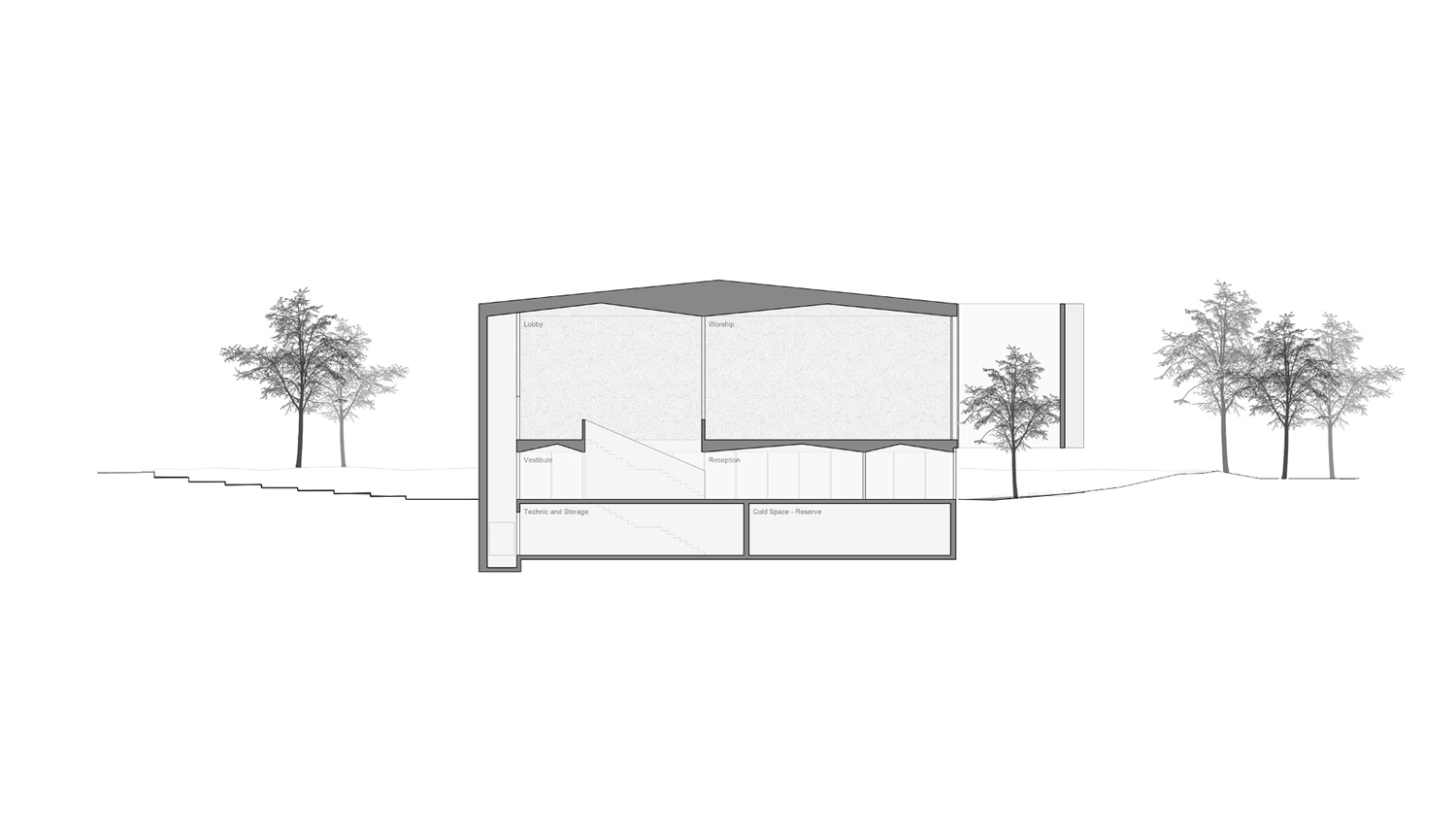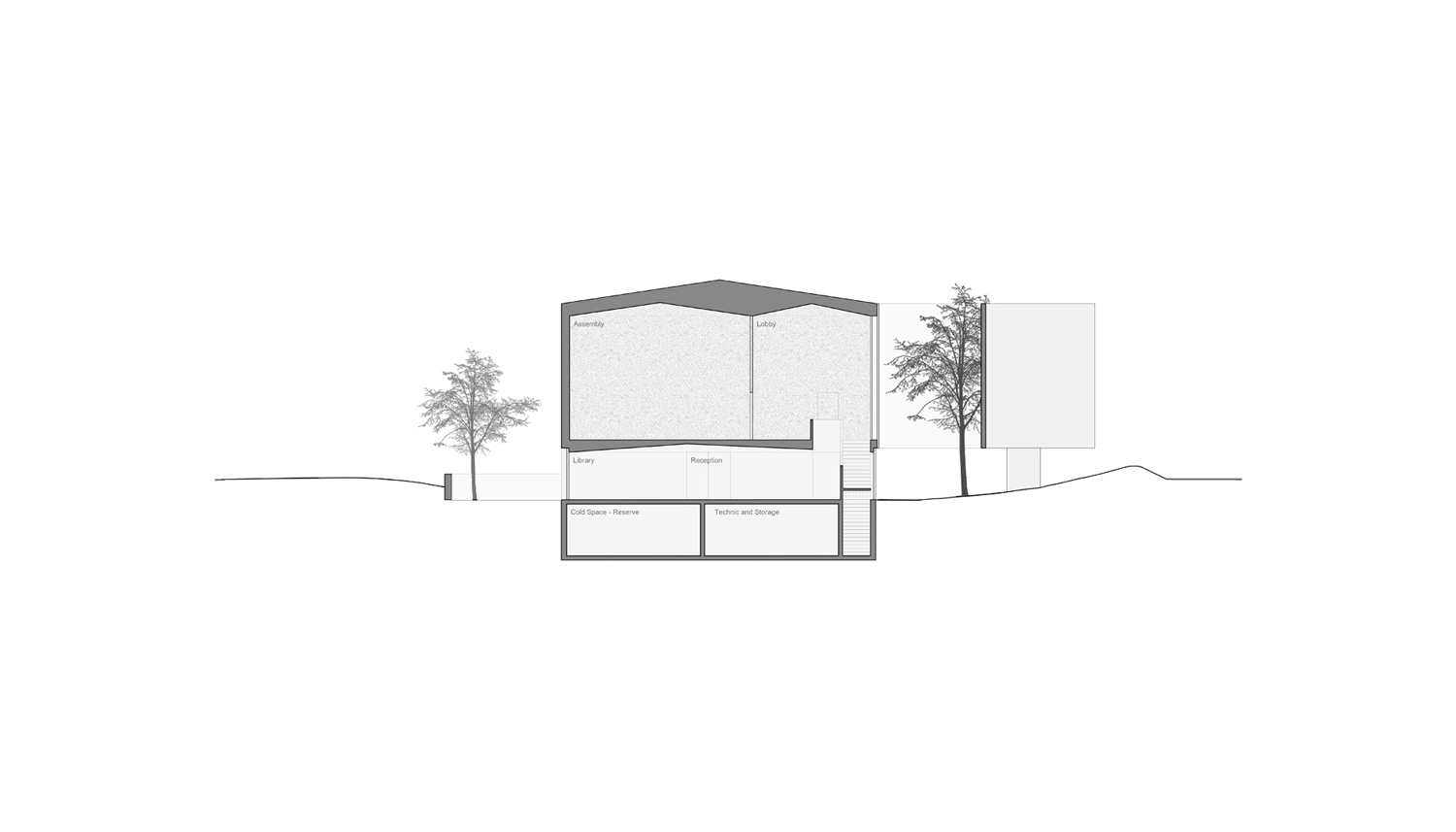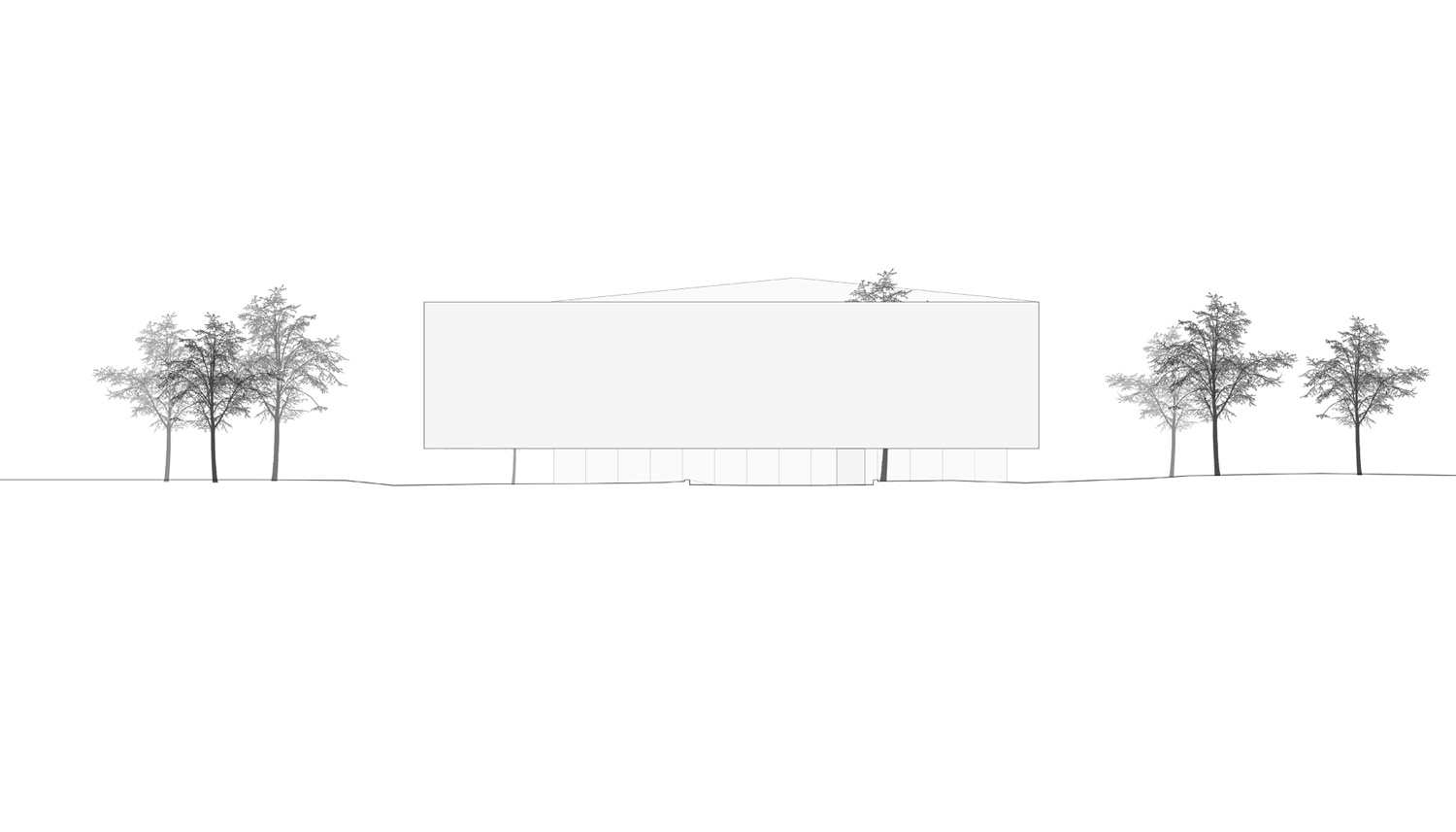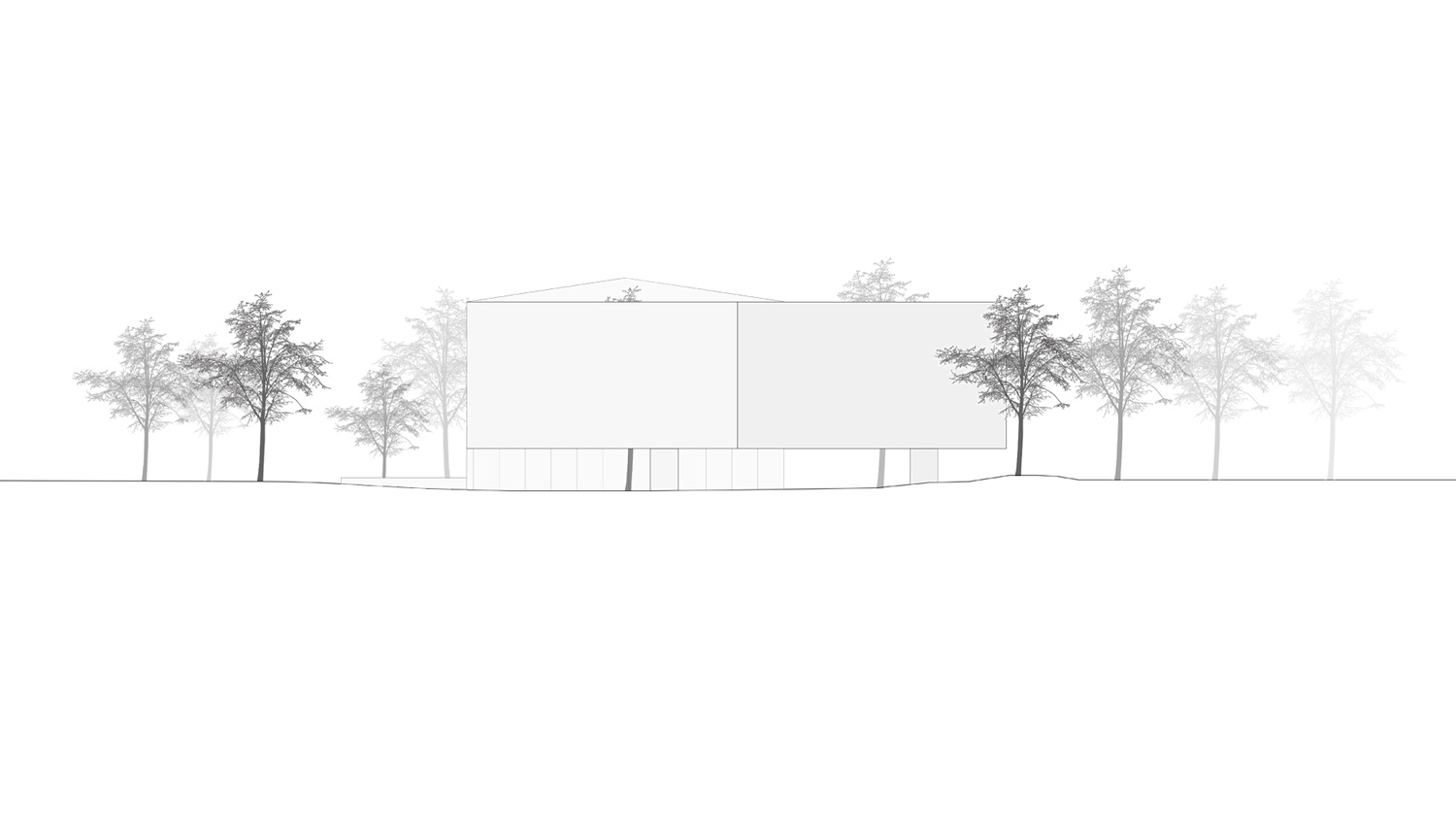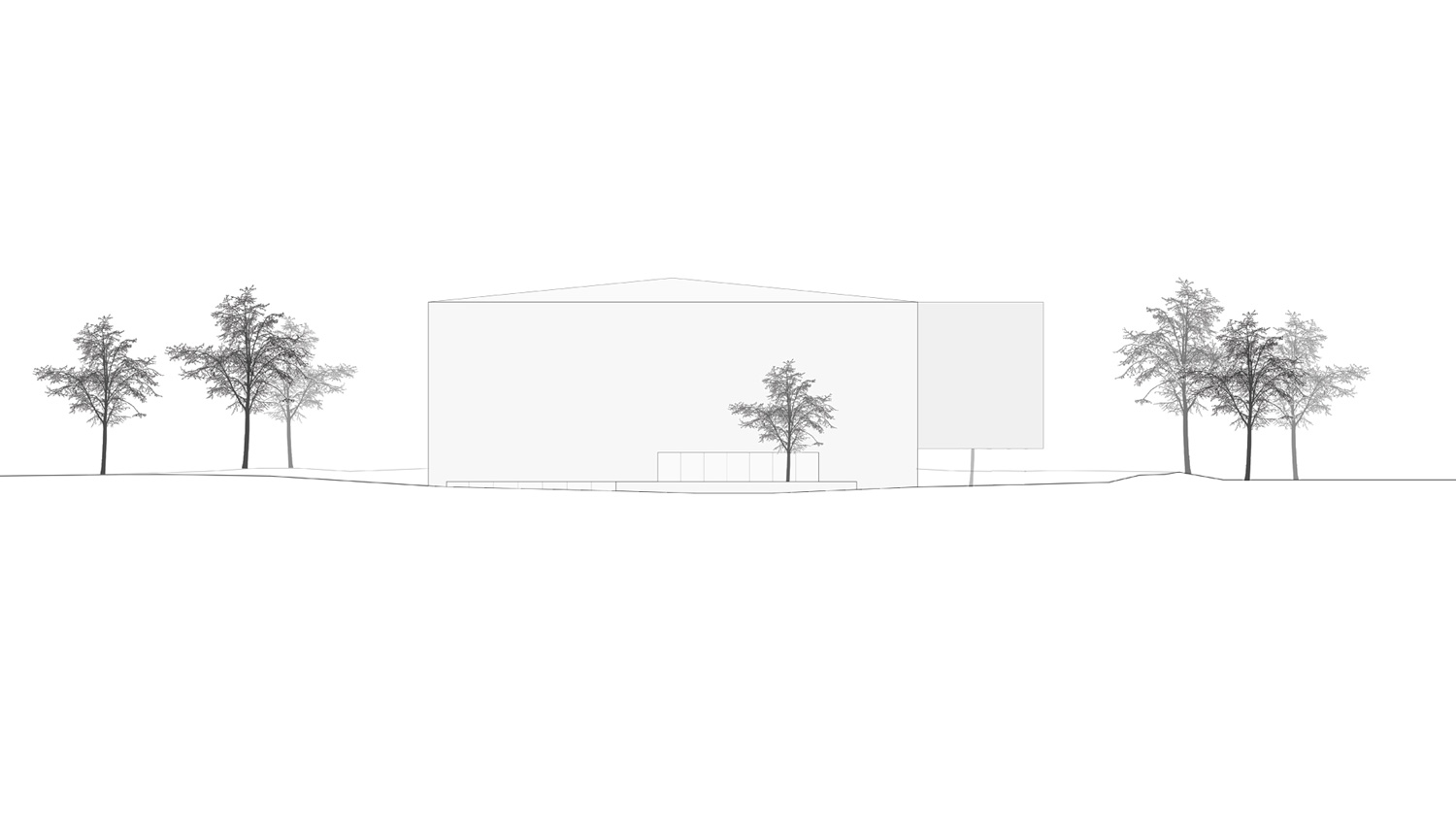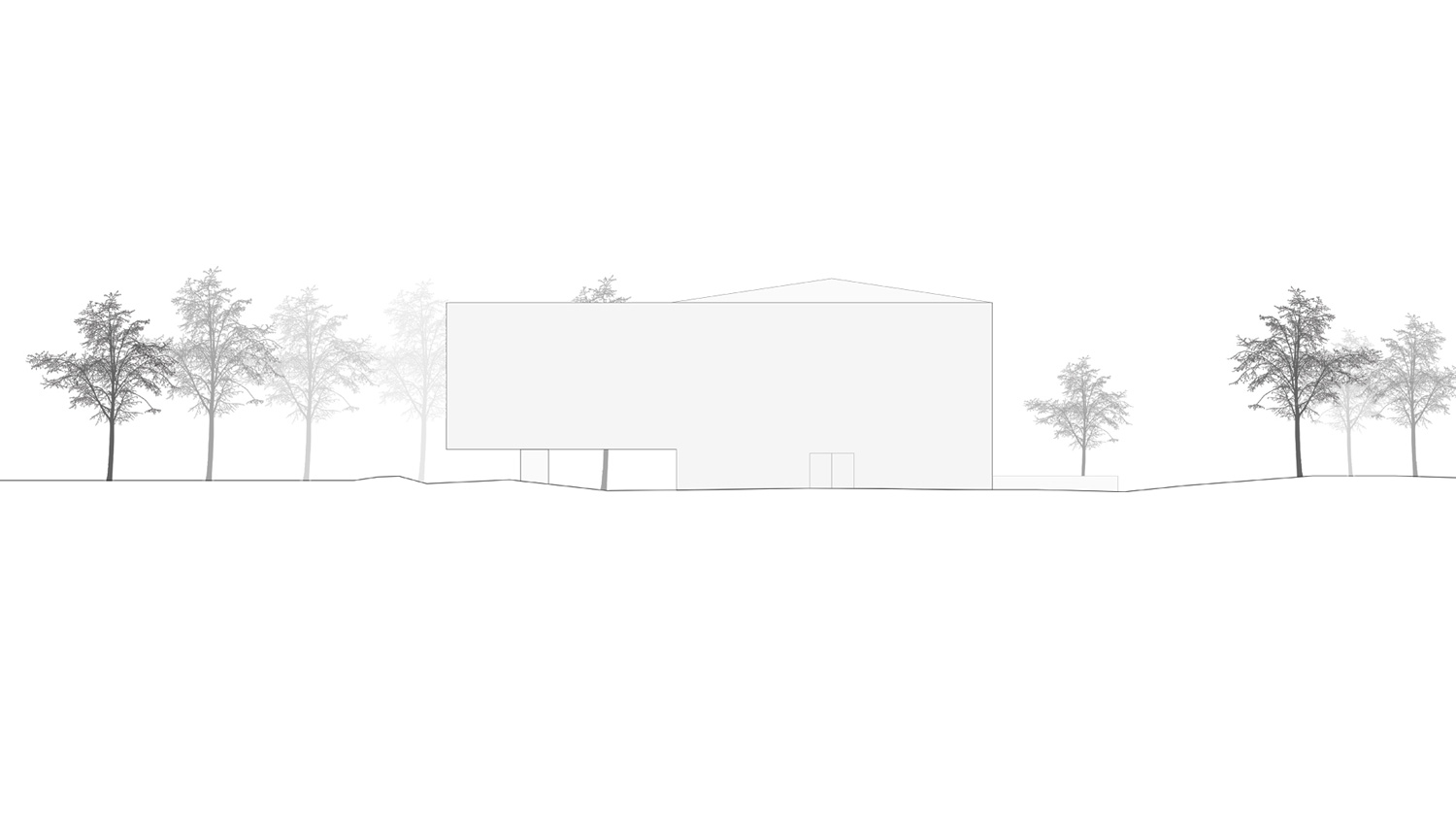☉ Mosque in Reykjavík is a thrid prize competition entry by TRÍPÓLÍ developed in 2015. It is located in Reykjavik Iceland in an urban setting. Its scale is medium. Key material is plaster.
The new mosque in Reykjavík is situated in a green field in the center of the city, between two popular outdoor areas; Laugardalur and Elliðaárdalur. It is surrounded by fields of grass and trees and can in a way be seen as a garden pavilion. The building has an outer shell that follows the street and site layout and inner shell that follows the direction to Mecca. The outer shell appears as a geometric rock formation in a green garden, with hints of something curious happening on the inside. The building could be seen as a geode stone – unpolished on the outside, but filled with gems on the inside. The boundaries between nature and the building are blurred by bringing nature halfway into the building, with trees and reflecting pools situated between the inner and outer shell of the building.
Building as an identity
The proposed building has a clear and expressive volume that calls for attention but doesn’t expose its function immediately. The building is modest in its surroundings with a subtle calmness, but yet calls for attention and arouses curiosity. Only when approached does the building expose its true nature. The entrance is through a triangular shaped garden that is enclosed by a hovering concrete wall, open towards the sky. When inside the garden the building opens up and welcomes guests with interesting views inside the building and an Islamic calligraphic pattern on the upper inner façade.
Atmosphere and space
The journey through the building, from arrival to the worship area, is through a series of dynamic spaces of varying sizes. The building leads the guest from one space to the next and creates a certain anticipation while creating a calm and peaceful atmosphere. After entering the building through the vestibule the next stop is the shoe storage and cloak room which are connected to the ablution facilities and restrooms. Next to the cloakroom is the reception, which is an open and bright area that serves as the heart of the lower floor. The reception can be opened up towards the entrance garden on one side and be merged with the library on the other side. The reception is also directly linked to the classroom, office and embalming facilities.
A bright and open stair leads from the reception to the upper floor, where you enter a space with a ceiling height of six to seven meters, filled with indirect sunlight through a large translucent glass façade. From there you enter both the auditorium and the worship area which can be joined into one large space. The qibla wall is slightly more transparent than the other walls on the upper floor to allow indirect light into the worship area with a tree outside the window as a focus point.
Materials and ornaments
The building has several layers of material use. The outer shell is made of raw concrete, mat and rough on the outside but smooth and polished on the inside of the atrium gardens. A large polished cube of cut basalt supports the cantilevering concrete shell. The inner shell is divided into two different layers; an upper and lower floor. The lower floor is made of generic materials with clear glazed facades facing the two triangular gardens. The upper floor is covered with decorated mat glass panels on walls and ceilings. The north facade has translucent glass while the qibla wall on the east side has semi transparent glass to emphasize the importance of the direction towards Mecca.
The glass panels cover all walls and ceilings on the upper floor. They have a mat finish, painted white on the back, with an Islamic calligraphic pattern sandblasted on top. The result is a minimalist and modern take on interior ornaments of traditional mosques. The qibla wall has a mat, semi transparent finish with a sandblasted pattern on top, which allows indirect light to flow through and creates dynamic light patterns on the floor.
